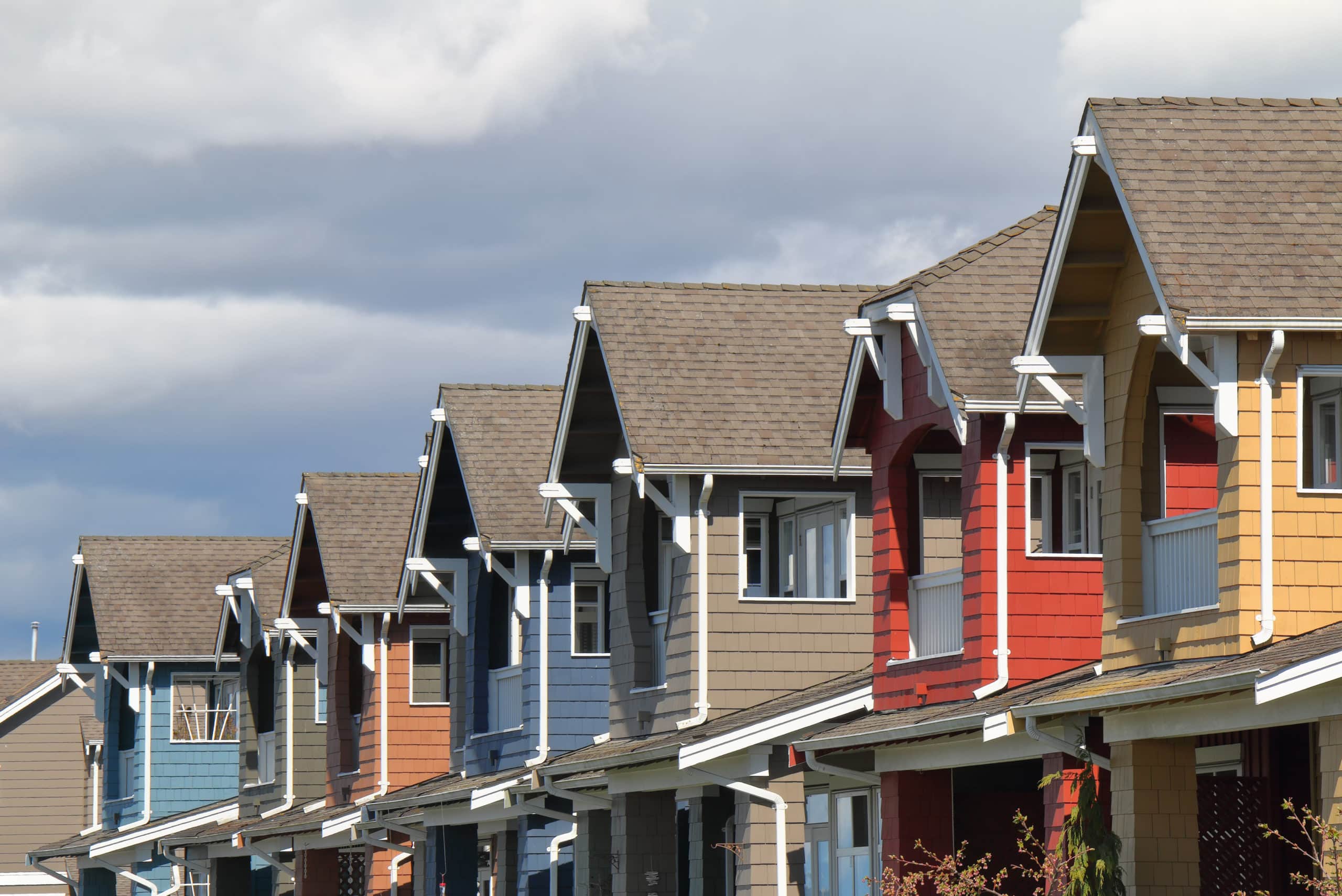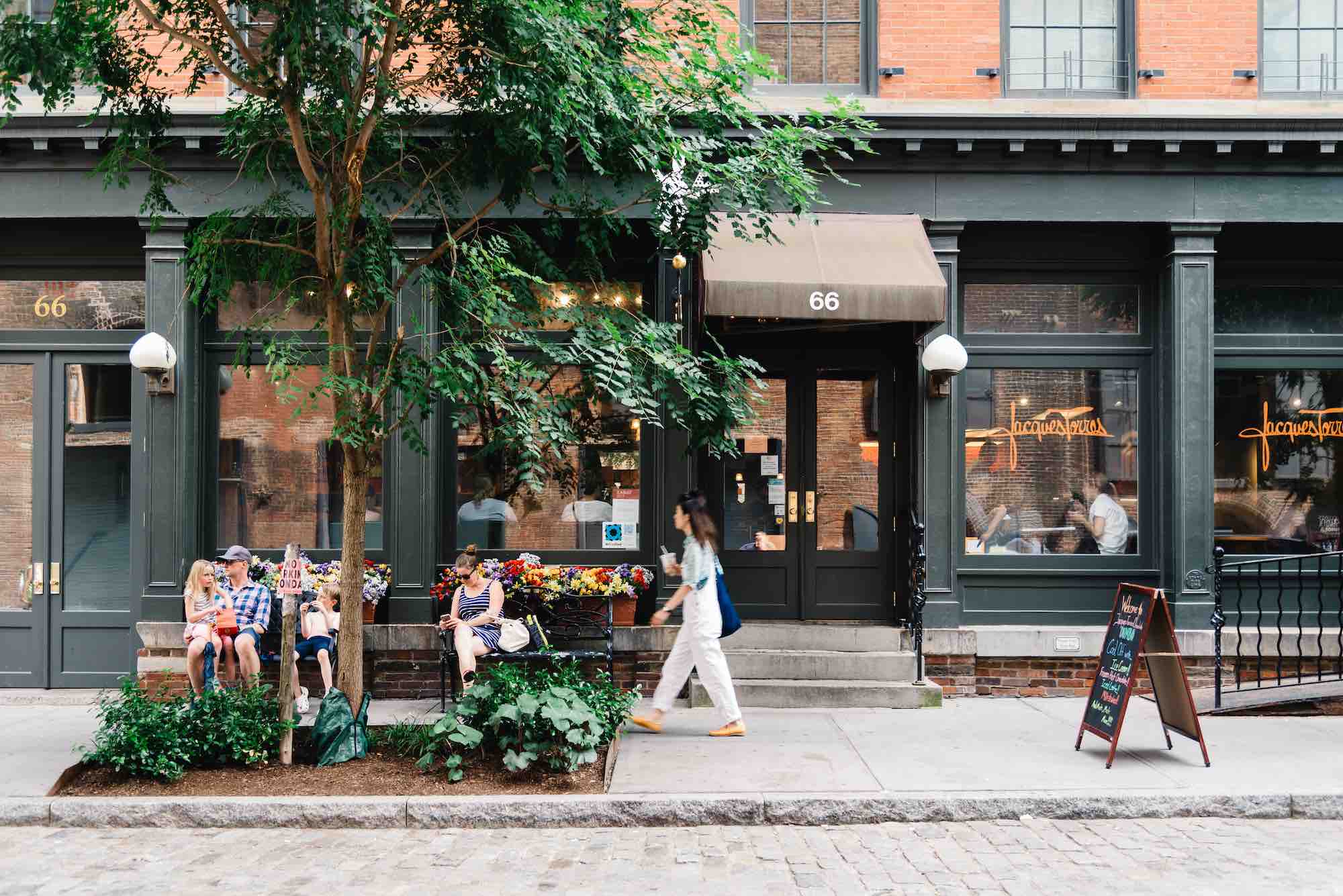With limited housing supply, surging demand, and rising rent and mortgage rates, younger generations are exploring alternative housing options, including smaller homes, options further afield in rural and second-tier markets, as well as creative paths to home ownership. These trends suggest economic opportunities for communities that were previously “off the beaten path.” The Place Consulting Team at Streetsense offers economic development strategies for municipalities of all sizes that seize upon these trends and more.
It’s widely known that no more than 30% of one’s income should go towards housing, but both rental and for-purchase options have become increasingly more expensive. For entry-level buyers, the cost of owning a home increased 72% from February 2020 to May 2023, according to an analysis by John Burns Research and Consulting (The Wall Street Journal). According to Moody’s, as of 2022, seven metro areas had rent burdens greater than 30% and hundreds more are uncomfortably close to the 30% threshold (as of 2023 Q1). What’s more, since 1999, rent growth has significantly outpaced household income at 135% to 77%, respectively, exacerbating the affordability crisis for thousands.
Despite these grim facts, home ownership remains the American Dream for many young people and for good reason: it builds wealth through home equity providing long term financial stability, protection from unexpected rent hikes, and, with fixed rate mortgages, insulation from economic downturns.
Why is it getting harder for young people to own homes?
Let’s consider the issue from a generational lens. Aging Boomers—the largest age cohort at nearly 70 million—and the Silent Generation are living longer. They are choosing to age in place for a host of reasons: they may wish to remain within their known community, they may hope to reserve built wealth, they may not have family to live with, or they cannot afford to leave. Often, they have a much lower locked-in mortgage rate than what is available for other homes (even smaller, more manageable ones). They could be income-restricted after retirement and may not be able to afford assisted or age-restricted options. According to Statista, the average rent for assisted living in 2021 was $4,500 a month. By comparison, as of 2022, the highest average monthly rent in the country is $4,334 (New York City). Boomers, collectively, do hold the most generational wealth, often via home equity, but because they’re living longer, they’re holding onto their homes longer leaving less available supply.
Members of Gen X, also known as the “Sandwich Generation,” need space in their homes to care for children and/or elderly family members, which means large homes. Although mostly geographically bound (partially due to school districts, healthcare accessibility, and/or jobs), this generation has big purchasing power and may be able to out compete younger generations with less savings for new homes, if they need/wish to relocate.
All said, this leaves fewer for-purchase options for younger generations (including those with growing families), resulting in surging rental and new for-sale demand, both being offered at high price points. As a result, members of the Millennial and Gen Z generations are delaying this life-defining purchase.
Although Gen Z is generally more frugal—a result of witnessing firsthand the economic hardships of Millennials—they still struggle to save. In fact, a recent survey by the National Association of Realtors showed the current, typical first-time homebuyer is 36 years old—compared to Baby Boomers who typically bought for the first time in their mid-to-late twenties.
What kinds of communities might offer opportunities for first-time home ownership and wealth building?
Both urban and first-tier suburban areas are experiencing speculation due to surging market demand. As the pressures of improved value reflective of market desirability increase, there are two likely outcomes. The first is redevelopment, often with high price-point rental housing ranging from multifamily to build-for-rent single family homes. The second is much smaller for-purchase homes at a higher price-per-square foot. Although this leads to more supply, there has been a decline in the share of new home projects priced below $400,000 in nearly every major home-building metro since 2018, according to Livabl by Zonda (The Wall Street Journal). Facing the realities of high for-purchase homes and/or stiff purchasing competition, some young people may consider alternatives in rural or second-tier markets in hopes of more affordable options and/or a quicker path to home ownership.
With the widely accepted post-pandemic “new normal” for white collar industries being hybrid or 100% remote, some people are inclined to consider living in places further than daily or even weekly commuting distance of their company office, especially if there is little sacrifice to quality of life. Moreover, with the clean tech industry being federally encouraged through the 2022 Inflation Reduction Act and the Chips Act, rural areas have seen the most foreign and domestic investments at more than $220 billion, according to the Financial Times, potentially attracting more residents/workforce to rural areas. Could this be the next G.I. Bill allowing Gen Z and Alpha to begin building generational wealth? One could argue that well-connected rural and second-tier markets (both by transportation and broadband networks) stand to benefit from the housing crisis in cities and first-tier suburbs if they can offer a variety of affordable housing options, quality education, and access to amenities.
What strategies might communities deploy to support economic growth in the face of market fluctuations?
Rural markets should embrace the opportunity to draw more residents through more affordable housing options. Livingston County, New York, where Streetsense recently provided economic development strategies, is located in the Finger Lakes region of New York State in the Genesee Valley. This mostly rural county is home to numerous charming small towns that are becoming increasingly appealing to new residents, including retired/nearly retired Boomers and highly educated Gen X and Millennials—all seeking a small-town lifestyle and all in need of housing specific to their generational needs and preferences. However, the existing housing choice is comprised of 71% single-family homes, nearly half built before 1960. Understanding the potential to accommodate both the (often highly-paid) remote/hybrid workforce as well as those seeking emerging clean tech industry jobs (including Gen Z graduates), Streetsense advised the county to focus on incentivizing and supporting essential quality of life needs that ensure their competitiveness among urban counter parts. Key recommendations included incentivizing housing variety, ensuring robust broadband connectivity, growing the clean tech industry in partnership with schools and universities, providing continued support of small and local businesses in downtowns, and increasing access to the natural and cultural amenities that comprise its identity. Additional supply won’t be enough, however. It’s imperative the county encourage a level of affordability with new housing supply to combat a potential perpetuation of the high demand/high-cost cycle. This will require more robust coordination among county departments—a Streetsense recommendation—that aims to emphasize the economic undercurrent of housing, land use, and transportation policy. With this approach, Livingston can compete with nearby big cities for residents/workforce, including younger cohorts, seeking an alternative lifestyle and/or more affordable housing options without sacrificing quality of life.
Second-tier markets, often in suburban or exurban contexts, should embrace speculation to garner more affordable housing options. Cities must be proactive, identifying the areas vulnerable to speculation/redevelopment and intentionally adopting market-informed policies and regulation reflective of underlying value and community needs before redevelopment is pursued. This approach provides developers and property owners more certainty and therefore limited risk while giving public sector decision–makers a foundation from which to leverage their approval.
Streetsense and CBRE recommended this approach for Congress Avenue in Delray Beach, Florida which is currently experiencing aggressive speculation due to high land values and housing demand. Multifamily residential is more profitable, putting pressure on industrial real estate and underperforming commercial sites. This poses an opportunity for the city to guide future investment in a way that meets the community’s needs. To realize the community vision of a mixed-use, walkable corridor that supports business activity and incentivized affordable housing, Streetsense and CBRE recommended regulation reform generally and in strategic locations, as follows:
-
Simplify and clarify the zoning code.
-
Increase by-right uses and remove punitive regulation on certain uses in market-supported locations, including residential and light-industrial uses.
-
Encourage full residential development in existing affordable housing incentive zones by discouraging it in areas more suited for mixed-use, like the existing TriRail station.
-
Encourage concentrated mixed-use development with flexible, market responsive regulation for ground floors nearest the TriRail station.
With a more intentional regulatory environment in place, speculation can be met with community expectations that may result in affordable housing options, even ownership options, in the right locations that begin to better serve an age-diverse community.
Finally, on a personal note, I have witnessed firsthand the lengths that younger people are going for home ownership. My younger sister and her husband, both Gen Z, live in Ellis County, Texas, a mostly rural, agricultural county just south of Dallas County. It’s home to a few quintessential, endearing Texas towns, while having great proximity and access to a big city, just a 35-minute drive north. To save for quicker home ownership, they purchased an RV to refurbish, then rented a lot within an RV resort outside of the county seat. The resort offers all the amenities of a multifamily apartment complex: a pool, laundry facilities, a dog park, walking paths, nearby lakes, a general store, and storm shelters. The community is mixed-income and mixed-age. They are now saving $1,200 a month and, in a way, are already homeowners. This creative approach benefits them and the county: it allows them to save and purchase a traditional home well before age 36, all without sacrifice of community or amenities. These kinds of strategic approaches for attracting residents/workforce while strengthening the local tax base should be considered as first-rate options for counties and municipalities to grow and prosper.
The path to home ownership for young people is undoubtedly difficult, but not impossible. The more communities, urban to rural, can recognize their unique place in the housing market and leverage that position to increase housing supply, choice and affordability for those being left out, the more economic competitiveness they’ll achieve. The Streetsense Place Consulting team understands this dynamic and can advise on proactive, intentional economic development policy and regulatory reform for your county or city. Reach out to work with us, we’d love to help.
The Place Consulting team leverages our strategic and creative advisory services to solve complex real estate issues that enhance the value of places.
BACK TO LATEST







